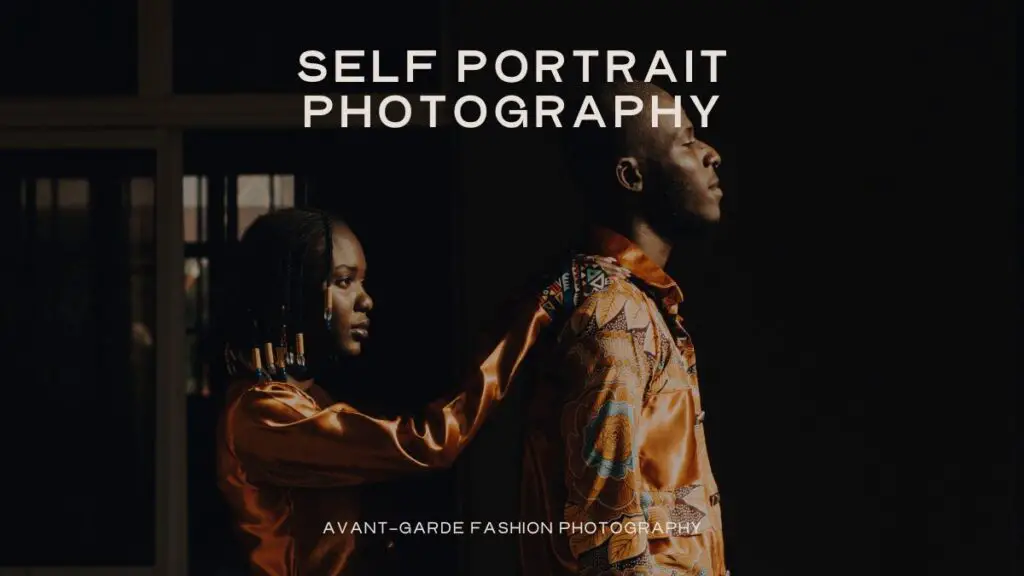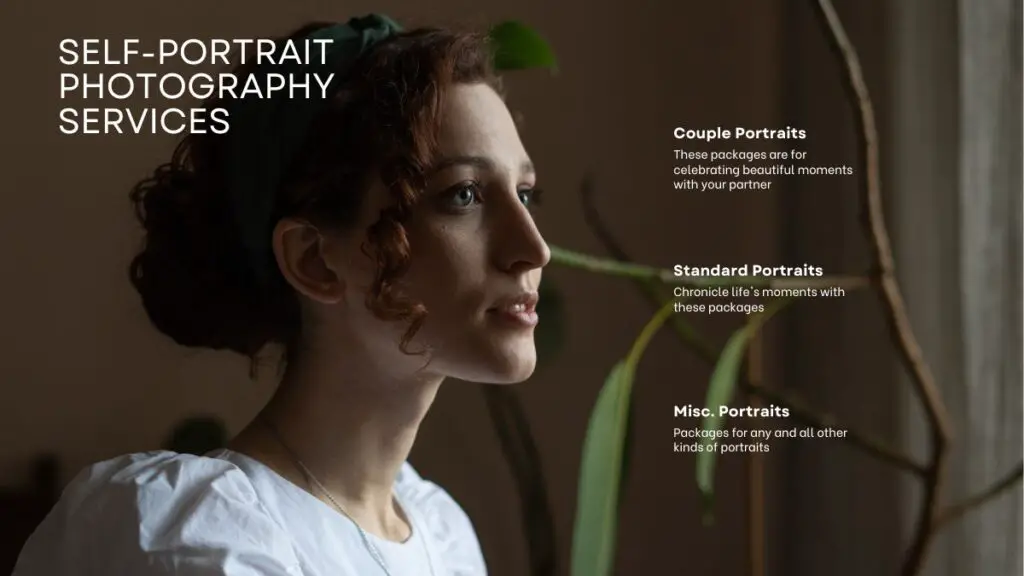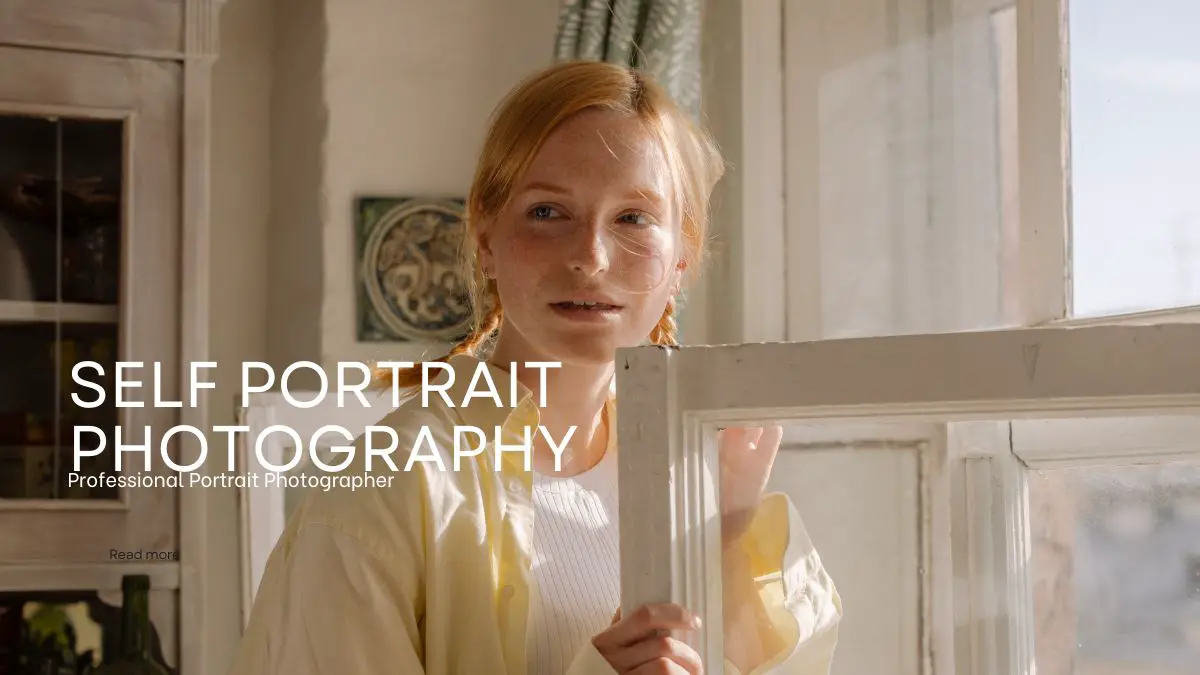Self Portrait photography is a unique art form that converts a simple artistic feeling into a meaningful story and self-expression. This consists of much more than just taking a selfie; self-portraiture is deeply linked to the human wish to understand oneself. An ideal photographer like Van Gogh and Rembrandt share their experience using the medium to perfect their craft.
Unlike the fantastic nature of selfies that describe today’s social media landscapes, self-portrait photography offers a pathway to break the unrealistic beauty canons while searching for one’s self-concept and self-esteem.
Understanding Self-Portraits
Understanding the importance of self-portrait photography involves various difficulties of identification and self-perception. This may serve as a means of artistic feeling, asking questions about the self, addressing significant inquiries about existence, and finding the best place within the world. Here are some key factors that define self-portrait photography:
Identity Exploration: At first, self-portrait photography is a study of identity. It creates difficulties at the start for photographers to face some issues and solve them for their self-understanding, often leading to deeper self-awareness. This step of photography can vary from a direct setting to the camera.
Artistic and Personal Growth: At the initial step of self-exploration, self-portrait photography is a journey toward artistic and personal growth. It offers different photographers unique opportunities to experiment with other methods and styles,, showing the native expertise’s ending line. This step not only lasts but also builds technical skills, empathy, and self-acceptance, developing personal and artistic development.
Creative Control and Expression: One of the most critical points of self-portrait photography is some expertise in creative control. Photographers can handle every view of the image-taking process, from the setting and lighting to the emotion and story conveyed. This setting allows for unrealistic precision and personalization, making self-portrait photography a powerful source for self-expression and sharing stories.
Through these settings, self-portrait photography converts image capture into becoming real and pursues that photographer’s feelings and skills with artistic expression and growth.
Choosing the Right Equipment
Choosing the fitting kit is fundamental in self-portrait photography to ensure both the images’ value and the shooting process’s ease. Here’s a failure of significant and nice-to-have kit, along with references for cameras, lenses, and decorations to get started:
Essential Equipment
Camera: The heart of your setup. For beginners, the Canon EOS Rebel T8i DSLR offers affordability and a range of features suitable for self-portraits, including a flip-out touch screen and built-in WIFI. Advanced photographers might prefer the Sony a7 III for its high-quality photos, lightweight design, and eye-tracking technology.
Tripod: A sturdy tripod, like the Manfrotto BeFree Advanced (Carbon), provides the necessary stability and flexibility for framing your shots. It’s lightweight, easily adjustable, and can extend relatively high.
Remote Control: Wireless shutter release devices or apps, such as the Sony Imaging App, allow you to take pictures from a distance, ensuring you are in the frame and focused without constantly running back to the camera.
Lighting: Good lighting is crucial. Start with natural light if possible; otherwise, a single high-quality light source, like a softbox or ring light, can dramatically improve the look of your portraits.

Nice-to-Have Equipment
Lenses: Experiment with different lenses to find what works best for your style. The Tamron 28-75 mm F/2.8 offers versatility for self-portraits, while the Sigma Art lens 18-35mm f/1.8 provides a wide angle for more creative shots.
Editing Software: Adobe Photoshop and Lightroom are industry standards for post-processing, offering comprehensive features for enhancing your photos.
Accessories: Consider investing in an intervalometer for taking photos at set intervals, an L-bracket for mounting the camera in different positions, and a fast memory card to prevent stalling.
Recommendations for Specific Needs
For Mobility: A lightweight travel laptop like the Dell XPS 13 and external hard drives for storage is helpful for editing on the go.
For Detailed Editing: A graphic tablet, such as the XP Pen Artist 12 Pro, can significantly enhance your editing capabilities.
By starting with the vital equipment and slowly including additional tools and accessories, you can build a helpful setup personalized to your self-portrait photography needs. Investigation is critical; try different camera settings, lighting preparations, and post-processing methods to discover what best captures your planned expression and style.
Setting the Scene
Setting the scene ensures your self-portrait captures the essence of your personality and storytelling. Here are detailed steps and considerations to help you prepare:
Camera Positioning and Settings:
- Position the camera at eye level or slightly higher to create a flattering angle. Use a tripod or any sturdy, flat surface to support the camera securely.
- Switch to Manual Shooting Mode for greater control over the image. Opt for a narrower aperture (f/2.8-4) to keep the focus sharp on you while softly blurring the background. Adjust the shutter speed and ISO based on the ambient light and the exposure you aim to achieve.
Focusing Techniques:
- Place the tripod or a stand-in object at the spot where you will be in the frame. This serves as a focus point. Set the camera’s focus on the top of the tripod or stand-in object, then switch to manual focus to lock the focal distance. This ensures sharp focus on you when you replace the stand-in object with yourself.
- Utilize a wireless remote shutter release or the camera’s self-timer drive mode, optionally with interval timer shooting, to capture the shot without needing to be behind the camera. This allows for a more natural and relaxed pose.
Integrating Personal Elements and Preparing the Scene:
- Choose a location that resonates with your personality, whether a meaningful landscape or an urban streetscape. The background should complement your story, not distract from it.
- Before shooting, take the time to arrange the area. This might involve clearing clutter, adjusting furniture, or adding props that add depth to your story. Planning and preparing the scene beforehand saves time in post-processing and ensures that every element in the frame contributes to the narrative.
By meticulously setting the scene with these steps, you create a cohesive backdrop that enhances your self-portrait, making it not just a photograph but a piece of personal storytelling.
Techniques for Captivating Self-Portraits
Capturing engaging self-portraits requires a blend of creativity, technique, and experimentation. Here are some strategies to enhance the artistry and impact of your self-portrait photography:
Creative Composition and Perspective:
- Experiment with unusual angles, distances, and close-ups to accentuate specific features or convey a unique viewpoint.
- Incorporate mirrors or reflective surfaces to craft intriguing compositions and add depth to your portraits.
- Utilize a second tripod to mark your position in the frame, ensuring sharp focus by setting the camera’s focus on it before positioning yourself.
Lighting and Color Techniques:
- Play with light and shadows to create visually striking patterns on your face, or use your shadow as the primary subject.
- Experiment with artificial lighting setups for a professional look or use color gels and neon signs to set a mood or tone.
- For a dramatic or nostalgic effect, convert images to black and white or use vibrant colors to enhance the emotional impact.
Digital Enhancements and Props:
- Combine images using digital editing tools for a composite self-portrait or employ a lens before your camera for a distinctive, inverted effect.
- Integrate meaningful props to express your personality, opting for significant items in your life or daily routine.
- Set your camera to take multiple shots or use a self-timer for more candid, spontaneous expressions, capturing various emotions and poses.
By employing these techniques, self-portrait photographers can explore new dimensions of self-expression and creativity. Whether through the manipulation of lighting, the incorporation of personal elements, or the use of digital editing, each method offers a pathway to more captivating and meaningful self-portraits.

Post-Processing and Editing Tips
In the realm of self-portrait photography, post-processing and editing play pivotal roles in refining the final image to reflect the photographer’s vision. Here are essential tips and techniques to enhance your self-portraits:
Basic Adjustments for a Natural Look:
Adjust exposure, contrast, and color balance to ensure your image looks natural and vibrant.
Keep the Clarity slider between +15 and -15 to avoid overly harsh or softened images. Use the exposure slider as needed and adjust the White and Black sliders minimally for balanced brightness and darkness.
To ensure accurate colors, especially under various lighting conditions, utilize the Xrite ColorChecker Passport. This tool helps create a custom color profile, enhancing the color accuracy of your photographs.
Advanced Editing Techniques:
Creative Post-Processing Ideas:
Combine two images into one or digitally cut and paste elements from different photos to create surreal self-portraits, pushing the boundaries of traditional portrait photography.
Experiment with black-and-white editing to emphasize emotions or nostalgia, adding a dramatic flair to your portraits.
For a unique twist, try creating composite edits or GIFs, offering a dynamic way to present your self-portraits.
To correct the white balance accurately, use the eyedropper tool in Lightroom on any white or gray area in the ColorChecker. This simple step can significantly impact the warmth or coolness of your image.
Enable Profile Corrections and Remove Chromatic Aberration in the Lens Corrections tab for images with lens distortions, vignetting, or chromatic aberrations.
Use the Spot Healing Brush Tool or the Healing Brush Tool in Photoshop to remove any temporary blemishes for a cleaner look.
Photographers can significantly enhance their self-portraits’ quality and artistic expression by implementing these post-processing and editing tips. Whether making basic adjustments for a more natural look, correcting technical issues, or experimenting with creative techniques, each step contributes to creating a compelling and visually striking self-portrait.
FAQs
What techniques can I use to capture the essence of a person in portrait photography?
To truly capture someone’s personality in portraits, consider these strategies:
- Create a movement to add dynamism to the shot.
- Provoke genuine laughter for a natural look.
- Understand body language to convey emotion better.
- Find your subject’s best angles to highlight their features.
- Set the scene to add context to the portrait.
- Use A.I. enhancements for quick touch-ups.
- Achieve a clear complexion and enhance the eyes to draw attention to the face.
How can I infuse my self-portrait with my personality?
To show your personality in a self-portrait, experiment with different emotions in a series of photos to find the one that best expresses your character. You can also direct someone else to capture your essence more effectively. Alternatively, create a collage using magazine clippings that resonate with a particular word or feeling you wish to convey.
What are some tips for taking personal photos of myself?
Here are tips to improve your self-photography:
- Extend the camera away from your body to capture more of your surroundings.
- Hold the camera slightly above your eyeline for a flattering angle.
- Ensure your lighting is flattering and appropriate for the mood you want to set.
- Apply the rule of thirds to compose a balanced image.
- Look directly into the lens to create a connection with the viewer.
- Don’t forget to smile if it suits the mood you’re aiming for!
Q: What is the ideal focal length for taking self-portraits?
For self-portraits, start with an 18mm or similar focal distance at an aperture of f/8 on a DSLR with a cropped sensor, or 11mm and f/8 on a mirrorless camera. If using a full-frame camera, the equivalent focal distance would be approximately 27-28mm. This range offers a good balance for capturing the subject and the environment.
Conclusion
Through the exploration of self-portrait photography, we’ve journeyed from the historical roots of this art form to the modern techniques that enable anyone to capture their essence in a photograph. This article has laid out the foundational aspects of self-portraiture, from understanding its significance in personal and artistic growth to selecting the right equipment and setting the ideal scene for a shoot.
The techniques shared here and post-processing insights provide a comprehensive guide to creating captivating self-portraits that do more than capture a likeness—they tell a story.
The journey of self-portrait photography is one of introspection and creativity, allowing photographers to become both subject and artist in their narrative. As we’ve seen, the richness of this genre lies not only in the technical execution but in its ability to delve into the nuances of identity and expression. For those inspired to explore this avenue, the path is ripe with potential for discovery and innovation.
As the curtain falls on this exploration, may the insights and techniques shared here serve as a beacon, guiding novice and experienced photographers toward the uncharted territories of their creativity in the artful pursuit of self-portraiture.

